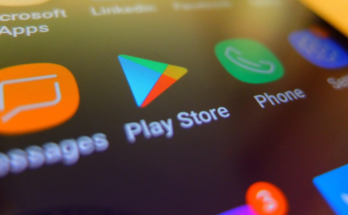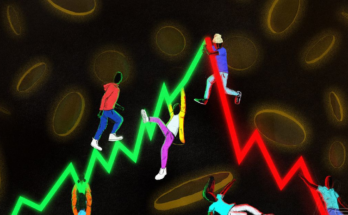Until October, the most Mike Winkelmann — the digital artist known as Beeple — had ever sold a print for was $100.
Today, an NFT of his work sold for $69 million at Christie’s. The sale positions him “among the top three most valuable living artists,” according to the auction house.
The record-smashing NFT sale comes after months of increasingly valuable auctions. In October, Winkelmann sold his first series of NFTs, with a pair going for $66,666.66 each. In December, he sold a series of works for $3.5 million total. And last month, one of the NFTs that originally sold for $66,666.66 was resold for $6.6 million.
NFTs, or non-fungible tokens, are unique files that live on a blockchain and are able to verify ownership of a work of digital art. Buyers typically get limited rights to display the digital artwork they represent, but in many ways, they’re just buying bragging rights and an asset they may be able to resell later. The technology has absolutely exploded over the past few weeks — and Winkelmann, more than anyone else, has been at the forefront of its rapid rise.
“He showed us this collage, and that was my eureka moment when I knew this was going to be extremely important,” Noah Davis, a specialist in post-war and contemporary art at Christie’s, told The Verge. “It was just so monumental and so indicative of what NFTs can do.”
A few factors explain why Beeple’s work has become so valuable. For one, he’s developed a large fan base, with around 2.5 million followers across social channels. And he’s famously prolific: as part of a project called “Everydays,” Winkelmann creates and publishes a new digital artwork every day. The project is now in its 14th year.
At the same time, NFTs have blown up over the past month and — for the moment, at least — are being seen by many as the way digital art will be acquired and traded going forward. For collectors who believe that’s true, the escalating prices are nothing compared to what NFTs will be worth down the road, when the rest of the world has caught onto their value.
Christie’s is also a legitimizing force for both Winkelmann’s art and NFTs as a technology. The 255-year-old auction house has sold some of the most famous paintings in history, from the only known portrait of Shakespeare created during his lifetime to the last-discovered painting by Leonardo da Vinci.
Combine that with Winkelmann already being at the forefront of NFT sales, and today’s auction was destined to set records.
“I do view this as the next chapter of art history,” Winkelmann said. “Now there is a way to collect digital art.”
The piece that was sold, Everydays: The First 5000 Days, is a collage of Winkelmann’s work starting at the beginning of the project, when he was posting somewhat crude sketches. It runs through years of evolving digital shapes and sceneries up through the beginning of this year, when he was posting extremely crude political illustrations.
The auction’s winner doesn’t get much: a digital file, mostly, plus some vague rights to present the image. But Winkelmann expects to work with the buyer to find various ways to display the piece physically, whether that’s on a TV in their house or projected onto “the side of a fucking building” at Art Basel.
There’s already been pushback against the rise of NFTs. Plenty of works of questionable artistic value are being sold at hype-driven auctions. Artists’ works have allegedly been stolen and auctioned off as authentic. And many artists are concerned about the climate impact of art sales that rely on blockchain technology, which is notoriously inefficient by design. (Winkelmann said he plans to buy carbon offset for all his NFTs going forward so that their impact is a net positive.)
Those who are early to the space think the tech is here to stay. Pablo Rodriguez-Fraile, the collector who bought a Beeple for $66,666 and resold it for 100 times that just four months later, started collecting digital art a year ago and co-founded the Museum of Crypto Art in part to display his growing collection. He sees Winkelmann’s rising sale prices as a way of proving to the public that the technology matters.
“The reason I did that sale was in no way shape or form for the money,” Rodriguez-Fraile said. “I really thought it was the right catalyst to signal the validation of what’s happening in the industry.”
At Christie’s, Davis plans to work with more digital artists to auction NFTs. With a growing crop of smaller marketplaces and countless number of NFTs being created daily, he sees Christie’s role as helping to promote the space in an “extremely thoughtful” way.
“We have more responsibility than we’ve ever had in any collecting category as arbiters of the items that we’re selling,” Davis said.
The plan isn’t to pull more traditional artists into the digital world (a Jeff Koons NFT isn’t next on the list, Davis joked), but to work with established digital artists to explore their “alternative art history.”
Rodriguez-Fraile believes that the next wave of artists and collectors will come to see NFTs as simply the way art is bought and sold.
“I’m confident it’s not a hype thing,” he said. “It’s the catalyst for a generation.”



